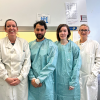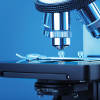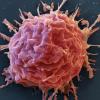Among the optics-based tools used in diagnostics, diffuse optics (DO) is rapidly emerging as one of the most attractive technologies.

It is based on analysing how light is absorbed and scattered by biological tissues, which relates to the tissue chemical composition and structure.
One of the key advantages of DO is that it is noninvasive and can be used to probe tissues at depths of up to a few centimetres and can detect functional activation and oxygenation of brain or muscles.
However, even when using the same DO principles to study or diagnose a given disease, laboratories around the world use vastly different platforms and techniques. This poses a challenge when trying to assess performance.
Now a collaboration between 12 European institutions is making strides towards realising performance assessment and standardisation (PAS) in the field.
Leveraging over 20 years of research, the initiative is centred around three protocols developed previously for assessing the performance of DO instruments.
Image credit | Shutterstock




